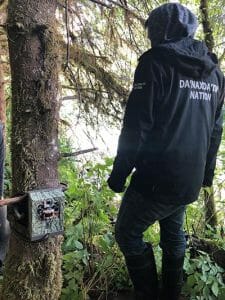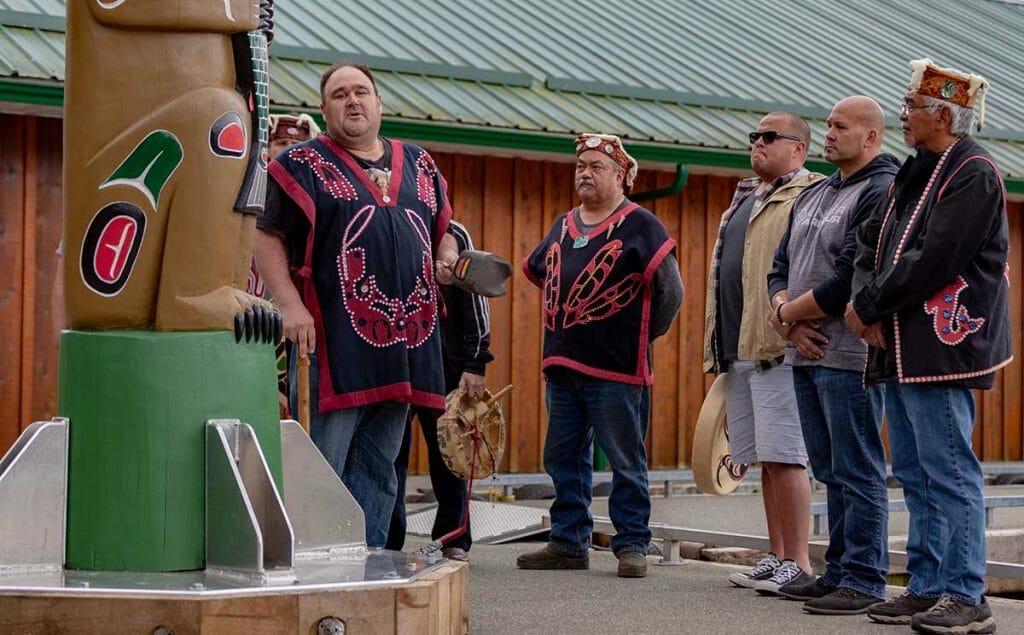Estimated Reading time

4 Mins
First Nations partner on grizzly bear facial recognition research
The member Nations of Na̲nwak̲olas Council have been enhancing their research capabilities to best manage and steward their territories, which include the diverse habitats of grizzly bears. Part of that work involves investing in and developing a research partnership with the BearID Project, a project that is developing bear facial recognition software.

Grizzly bears play a central role in the cultures, ecosystems, and economies of coastal First Nations. “The grizzly bear is an icon in our cultural heritage. It’s always been important to work in harmony with them,” explained Dallas Smith, President of Na̲nwak̲olas Council in a recent CBC article. “With bears being so important we need to be in a position to understand what they need,” he says.
With that goal in mind, the member Nations of Na̲nwak̲olas Council have been enhancing their research capabilities to best manage and steward their territories, which include the diverse habitats of grizzly bears. Part of that work involves investing in and developing a research partnership with the BearID Project.

Research conducted by the BearID project is developing face recognition software to identify individual grizzly bears. The technology is based on the same software used to recognize human faces. The aim of the research team is to provide scientists with a new technique to monitor wild populations of grizzly bears and ask a wider variety of applied research questions.
The research is supported by Knight Inlet Lodge, an eco-adventure business that was acquired by Na̲nwak̲olas Council in 2017. The Lodge works to maintain a healthy grizzly bear population, and reinvests a portion of its profits into grizzly bear research and salmon enhancement projects, including the BearID project.
Since the BearID project research requires a substantial amount of data in the form of photos and videos of grizzly bears a partnership formed between Guardian Watchmen of the Ha-ma-yas Stewardship Network (Na̲nwak̲olas Council) and BearID lead researcher Melanie Clapham. The project has used data of grizzly bears gathered from trail cameras set up in the First Nations territories of Knight Inlet and Glendale Cove. Additionally, Guardian Watchmen from Na̲nwak̲olas member Nations have set up over 50 cameras in their territories and that data will also be shared with the BearID project.
The grizzly bear is an icon in our cultural heritage. It’s always been important to work in harmony with them. With bears being so important we need to be in a position to understand what they need.
The data captured by the wildlife cameras provides images for the BearID software to analyze in a process that Clapham describes as “deep learning.” Clapham says the open-source software can be used and adapted by anyone She hopes it will be adapted by as many groups as possible as it will allow people to understand animal behaviour, like how they move in and out of densely populated areas. It could also help researchers understand the movements of endangered species.
A Na̲nwak̲olas article about the grizzly research notes that many of the Guardians “already knew a great deal about where bears typically travel and feed in the territories,” so they were able to advise Clapham on ideal locations to place wildlife cameras. “Because we are out there a lot, we have a pretty good idea where the bears go,” says Tlowitsis First Nation Guardian Gina Thomas in the article.
This sort of research capacity is something First Nations have been working to build for years. “We were tired of waiting for other sources of support,” says Smith. “Now we’re building our capacity to do what we need to do.”
Working with the BearID project is just one of the ways Na̲nwak̲olas member Nations are seeking to steward their territories. “It really is a whole ecosystem of research,” says Smith. The research being done by Guardians and the BearID Project is furthering land use planning by Na̲nwak̲olas member Nations. “The data from those cameras is going to help us understand these animals, it’s going to help with grizzly bear management.”

In particular, grizzly bear research will help manage and mitigate the impacts of wildlife viewing at Knight Inlet Lodge and will position the company to more effectively and efficiently deal with bear-human interactions. The member Nations of Na̲nwak̲olas Council are building a grizzly bear management and response plan for human/bear interactions within their collective territories.
“We want to use our science and our research partners to manage those interactions in different ways,” says Smith. “We want to look at where the bears are, where did they come from, how can we minimize impacts on them?”
Ultimately, the the research is providing important context for First Nations planning and decision-making. “We want to make the best decisions for our territories, economies, and our communities; it’s about finding the right balance,” he says. “And that’s what governance is—that’s why I love this work.”
Read more about grizzly bear research being undertaken by Guardians of the Ha-ma-yas Stewardship Network on the Na̲nwak̲olas Council website and learn about the grizzly bears of Glendale Cove (where Knight Inlet Lodge is located) on the BearID website.
